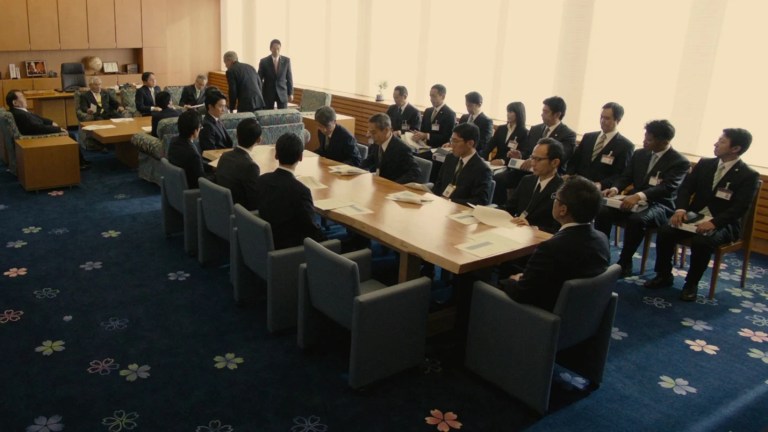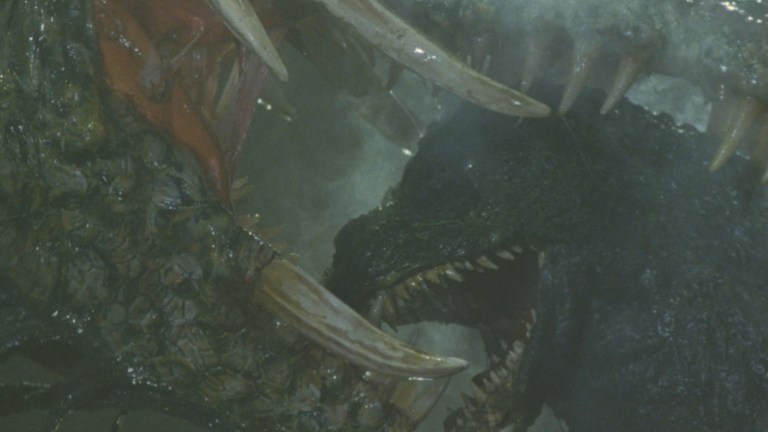Godzilla’s 3 Rules: Clearing Up the Confusion about Toho’s “New” Rules
New rules? Not really. If you’ve seen Godzilla Minus One, then you’ve already seen a movie that adheres to these three big rules.

Table of Contents
Introduction: Getting the Wrong Idea

(Originally published July 3, 2024)
With two successful movies, a live-action series, and even an Oscar victory, Godzilla has had quite a run recently. The King of the Monsters is as popular now as ever. Along with a surge in popularity comes a lot of discussion. And, naturally, with widespread discussion comes misinformation. Or, to look at it less cynically, discussion often leads to confusion about the small bits of information people react to on social media. The latest confusion involves a few supposedly “new” rules for Godzilla.
Recently it was posted online that Toho revealed its rules for “all future Godzilla projects.” The initial post people are reacting to came from @DiscussingFilm on X, which is dated June 22nd, 2024. This is the post that most articles regarding the subject point back to, and the post that most comments and reposts either directly or indirectly originate from. DiscussingFilm states that Toho’s rules are that “Godzilla is not allowed to die or ‘prey on people or things.'” The information is sourced from the Japanese web site Livedoor. The Livedoor link in the X post is now broken, but the original article can be found on the Wayback Machine.

DiscussingFilm’s information is based on a translation of the original article, and their post is short enough for people to get the wrong idea if they don’t look into it any further. So, of course, many people got the wrong idea. The original article also doesn’t cover everything, because Toho actually has three big rules for Godzilla, not just two. And the rules aren’t exactly new either (though to be fair, DiscussingFilm doesn’t say they’re new, that was made up by other people reacting to the news). So, to clear everything up, we’ve located a longer, more in-depth article which was published about a month and a half before the article most people are reacting to.
This longer article, published by the Japanese entertainment web site Natalie on May 1st, 2024, is an interview with Tetsuya Yoshikawa, the head of Toho’s Godzilla Room. Yoshikawa is also the person quoted in the Livedoor article, but he goes into more detail in the Natalie interview. Joining Yoshikawa in the interview is Go Miyazaki, a member of the Godzilla Room whose recent duties included being in charge of the Japanese dubbing for Godzilla x Kong: The New Empire, as well as overseeing the creation of the Japanese theme song for that film.
The Godzilla Room

Before we get into the rules for Godzilla, it’s important to explain where these rules are coming from. As explained by Tetsuya Yoshikawa in the Natalie interview, a “Godzilla Room” was established by Toho in 2019 (with the success of Shin Godzilla in 2016 being the impetus for its creation). The Godzilla Room is a dedicated team of people—consisting of fourteen members at the time of the interview—who oversee the Godzilla brand. One of the Godzilla Room’s main goals is to develop strategies for the continued long-term growth of the brand. Their other main goal is to ensure that any project officially associated with Godzilla adheres to Toho’s principles for the character. To formalize their principles, the Godzilla Room created a “Godzilla Charter.”

Yoshikawa explains that the Godzilla Charter applies not only to movies and shows, but also merchandising, advertising, and just about anything else. In the Natalie interview they don’t go into great detail about everything that is on the charter, but Yoshikawa and Miyazaki do say that they aren’t too strict with all the principles if a project is particularly interesting. However, there are three things that Yoshikawa says are absolutely forbidden. These are the three big rules for Godzilla which are explained in the following three sections of this article.
One more note before the rules. It should be made clear that Godzilla Minus One was made after the Godzilla Room was created and the Godzilla Charter was implemented. Yoshikawa explicitly states in the Livedoor article that Godzilla Minus One was checked against the charter and was approved. So, if you’ve seen that movie, then you’ve already seen a Godzilla who completely adheres to the rules listed below.
Rule 1: Godzilla Cannot be Shown Eating People

In the interview posted on Natalie, Tetsuya Yoshikawa states that Godzilla must not be seen preying. This is the rule that has caused the most consternation among commenters. Specifically, many people are speculating, wrongly, about the use of the word “prey.” Some people interpret “prey” in a very broad sense of any kind of pursuit and destruction, but Yoshikawa is using a strict definition of prey, which is to capture and eat.
The Natalie interviewer clarifies this by asking a followup question, specifically asking if, when Yoshikawa says “prey,” he means that Godzilla cannot be shown eating people. Yoshikawa replies that yes, this is what he means, and more generally that Godzilla should not be shown eating at all.

This does not mean that Godzilla cannot cause destruction, and it does not mean that he can’t be shown chasing, attacking, or killing people. We know this to be the case, because Godzilla Minus One was made with this rule in full effect. Just starting with the opening scene, Godzilla attacks people, kills them, and even bites down on multiple victims. The important part is that he is never seen eating anyone. He chomps, then tosses them away. So, biting is fine, consuming is not.
Rule 2: Godzilla Can Never Completely Die

One of the things written in the DiscussingFilm post is that “Godzilla is not allowed to die.” This is only partially correct. In the Natalie interview, Tetsuya Yoshikawa says that the Godzilla Room’s second non-negotiable rule is that Godzilla can never “completely die.” A strong emphasis should be placed on the word “completely” in this statement. Godzilla can be stopped, and he can even be destroyed to an extent, but his life can never be completely ended.
This shouldn’t be surprising to anyone though. With thirty live-action Japanese films to date, Godzilla has shown that he can’t ever truly be killed (though, it is true that they’re not all the same Godzilla, and Godzilla has died on rare occasions). To illustrate this point, we’ll go back to Godzilla Minus One. [SPOILER WARNING] At the end of the movie, Godzilla’s head is exploded and his body falls to pieces. However, at least one of the pieces is shown to still have life as it pulsates underwater. So, Godzilla isn’t completely dead, despite being destroyed and effectively killed for the time being. [END SPOILER WARNING]
Rule 3: Godzilla Cannot Talk

The most amusing of the Godzilla Room’s rules is number three. In the Natalie interview, Tetsuya Yoshikawa says that Godzilla should not talk. He admits that they have allowed Godzilla to speak in the past (keep in mind these rules apply to media beyond just the movies, such as comic books and commercials), but that won’t be the case anymore. The one exception to this rule is Toho’s Chibi Godzilla, who you can watch in animated form on YouTube. Chibi Godzilla talks, and so do the other chibi kaiju.
Do the Rules Apply to the American Godzilla Movies?

This is an interesting question that might need further clarification. Or maybe it is just a case-by-case basis. In the Natalie interview, Yoshikawa says that Toho didn’t “invest” in Godzilla x Kong: The New Empire, so Legendary Pictures was not contractually obligated to follow Toho’s rules and principles. Even so, Yoshikawa goes on to say that Toho and Legendary have a good relationship, so Legendary was receptive to the Godzilla Room’s opinions and accepted them.
Many of the specifics of Toho and Legendary’s licensing agreement are unknown, but apparently it doesn’t involve giving Toho any official say in how Godzilla is used. But if Legendary upsets Toho, then they’re less likely to renew the licensing deal, so we can probably expect the American Godzilla movies and shows to follow the rules.
